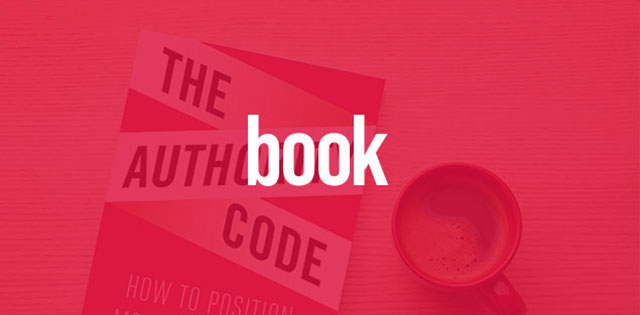Naming Your Company (And Your Services And Products)
- April 25, 2016
- Posted by: Rochelle
- Category: Brand + Design, Marketing + Selling

When I co-founded my first company, we agonized over our first big decision: our name.
After a couple of interminable sessions covering the walls of a Chicago conference room with color-coded sticky notes, we finally emerged with an idea that eventually turned into our name: Qwest Consultants.
This was in 1994—well before Philip Anschutz coined the term for the now defunct Qwest Communications. (I’ll never forget the letter from their trademark attorneys, but that’s another story).
Our choice turned out to be perfect in the end—and not because a big-name entrepreneur made hay with it. Nope. Our claim to fame was the “Q”. No one else in the industry—anywhere—had a “Q” business. That plus our unique concept (flexibly scheduled MBA moms/dads) made us easy to find and hard to forget.
And it translated into cash when years later we sold the business to Arthur Andersen.
Now as any big corporate naming specialist will tell you, there’s an art and science to choosing the right name.
But let’s just stipulate you don’t have a half million bucks to hire them—how do you as a soloist or small firm leader do this on your own?
Start with this: resist the urge to choose the first name that pops into your head. Because this is a big decision. It deserves every bit as much thought and soak time as you put into building out your services and products.
Your next step is to clearly articulate your plan and vision for your business/service/product. Who will you serve—and how? If it’s a product, then what exactly are you delivering and how?
What are you already known for? How will you position yourself in your market—and who else is in that space? And—perhaps the very last thought that may be on your mind—what’s your exit strategy?
Because you want to begin with the end in mind.
If your goal is to create a business beyond yourself—one that will grow with employees and partners and ultimately be sellable—the last thing you want is your name on the door. Your ego may feel better, but you’ll constantly run up against limitations. Clients want to talk only to the name on the door. High-performing, partner-minded employees want ownership beyond your name. Buyers discount firms that are owner-centric.
The exception? A business that will produce profits based on a single rock-star (or future rock-star) persona or point of view—one where selling the business isn’t the point. The value is instead in ongoing revenue emanating from a deep point of view and/or a “personality”. Think Marshall Goldsmith, Dan Pink, The Heath Brothers, Marie Forleo, Tony Robbins and Suze Orman. And toss in a few internet sensations.
Using your name is an excellent choice when it’s primarily you delivering the goods and you plan to keep it that way: authors, coaches, consultants and solo financial advisors.
What if you have partners? Well then, in time-honored lawyerly and big-firm consulting tradition, you can use multiple names in your masthead. But beware if you’re not a lawyer or a financial advisor—you run the risk of appearing overly stuffy, unless you can tell an engaging story about your name. Warby Parker anyone?
But maybe you want to get more creative.
If that’s the case, you’ll develop a memorable, one-of-a-kind name that’s worth branding. One that has some zing, the right mouth-feel and that perfectly captures the right essence.
Of your business, your service, your digital product.
Now we’re not talking about taking an un-special, common word and adding “coaching” or “consulting” or “advisors” to it. No renaissance or champion or peak/pinnacle anything. Please don’t go there.
For this to work, you need an exquisitely fine-tuned understanding of your world: your vision, your desired positioning, your best clients and buyers and the most engaging and valued parts of your delivery.
Got it? An on-line deep-dive is next (although if you’re still wrestling with an aspect of your vision, this can help you nail it down). Go to tens, even hundreds of websites of leaders in and outside your industry to get smart on who’s out there, what they’re selling and how. See which ones feel like they’re in your brand neighborhood and start making a shortlist of the ones that inspire you.
And while you can’t—and won’t—lift the work of others, you CAN use them to inspire you to create your own white space. Word to the wise: google anything you come up with to understand whether and how it’s been used before. Is it trademarkable (not always a deal-breaker) or just too close to someone else’s IP for real distinction? Can you get the right URL or do you need to move on?
If you’re doing this alone (and yes, it’s better to have a sounding board provided it’s the RIGHT sounding board), you’ll need to allow time for your research and ideas to rattle around. They may not resonate until you speak them out loud and give them a test drive.
Write them out, play with alternatives. When you believe you’ve narrowed it down, sleep on it, shower on it, walk the dog on it.
But like any creative endeavor, beware of whom you share it with and when—just because your old boss or key client is supportive doesn’t mean they have the vision to choose the right name for YOUR business.
Caveat: when you have sweet-spot clients who you’d replicate 100 times over, listen carefully to their reactions and reasoning, especially when it comes to naming products and services. There may well be gold there and you want to pay close attention.
I’ve named more than a few handfuls of consulting and advisory firms, practices and products and so I say this with experience—and love: do NOT create a committee of your spouse and pals to pass judgment on your choice.
Keep it lean—a few reviewers are often sufficient unless you’re undertaking a major re-naming of an existing business. Choose those with some real-life marketing, business, and creative creds. Take their advice into consideration yes, but remember the final decision is yours.
You must stand up for your vision.
That’s why they call you a leader.







Fascinating question/ issue/ problem when you position yourself as the “brand” but I balance against a website URL I point to my site and based on a phrase about what I deliver for clients, “strategic public policy;” just removed the spaces before and after “policy” and add “.com.”
The transition thought comes to mind more with a possibility I get dragged back into government kicking and screaming (maybe not) or that the practice could evolve to bring in a partner or associates (no in my current plan). And I remember it was one of your blogs that got me to check and find the URL became available and I scooped it right up.